|
|
Post by Peter Lewis on Dec 26, 2015 11:48:47 GMT 12
During my recent travel to Ireland and Europe, I was able to visit some of the more well-known aviation museums. I have already posted details of my visit to the Foynes Flying Boat Museum. Next call was to the Musée de l'Air et de l'Espace, France's main state-owned aviation museum. This is housed at Paris–Le Bourget Airport, located within portions of the communes of Le Bourget, Bonneuil-en-France, Dugny and Gonesse, 11 km north-northeast of Paris. The airport commenced commercial operations in 1919, but although no longer hosts airline traffic since the late-1970s it still operates as a field for GA operations and business aviation. The museum can be reached via the metro underground and then by public bus. Unlike some aviation museums, the entranceway is pretty unmissable 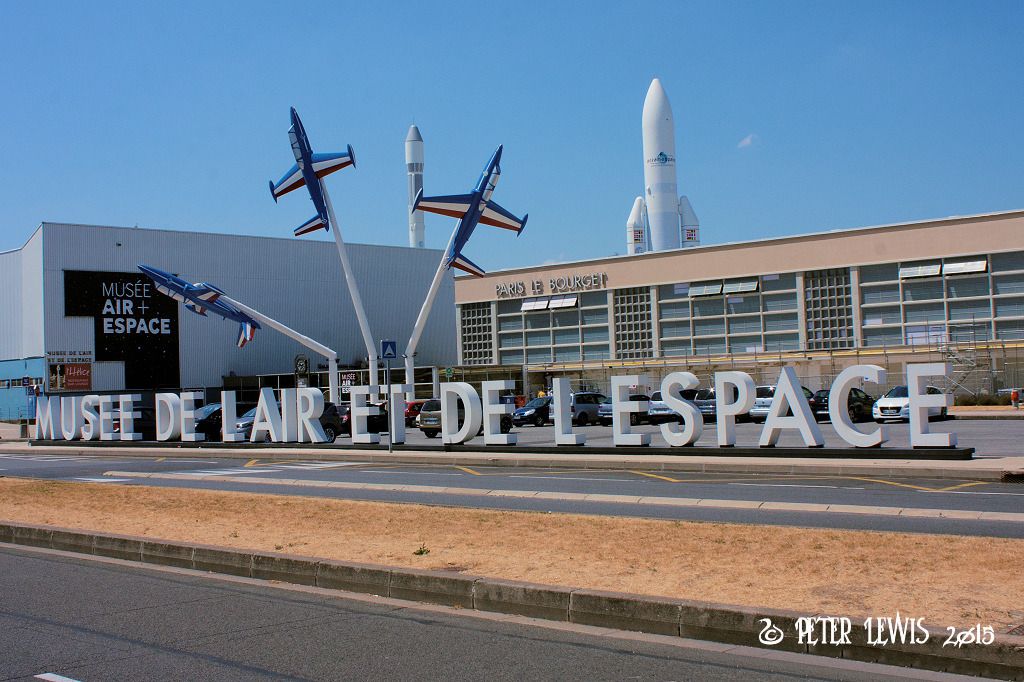 There is also a memorial outside, which seems to refer to "the test pilot and the crew"  Entering the museum, the exhibits are largely laid out by date sequance, starting with the balloon era. This Montgolfier balloon does ascend and descend in a regular cycle by means of a hot-air system 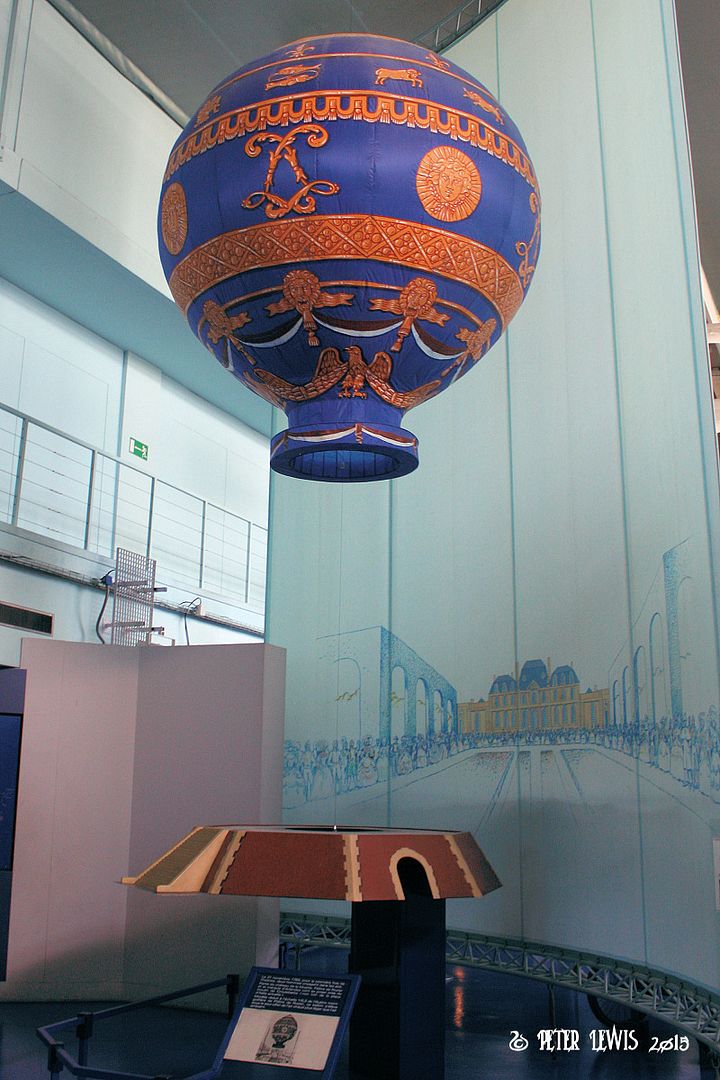 The early aviation dreamers are then presented, with Otto Lilientahal prominent 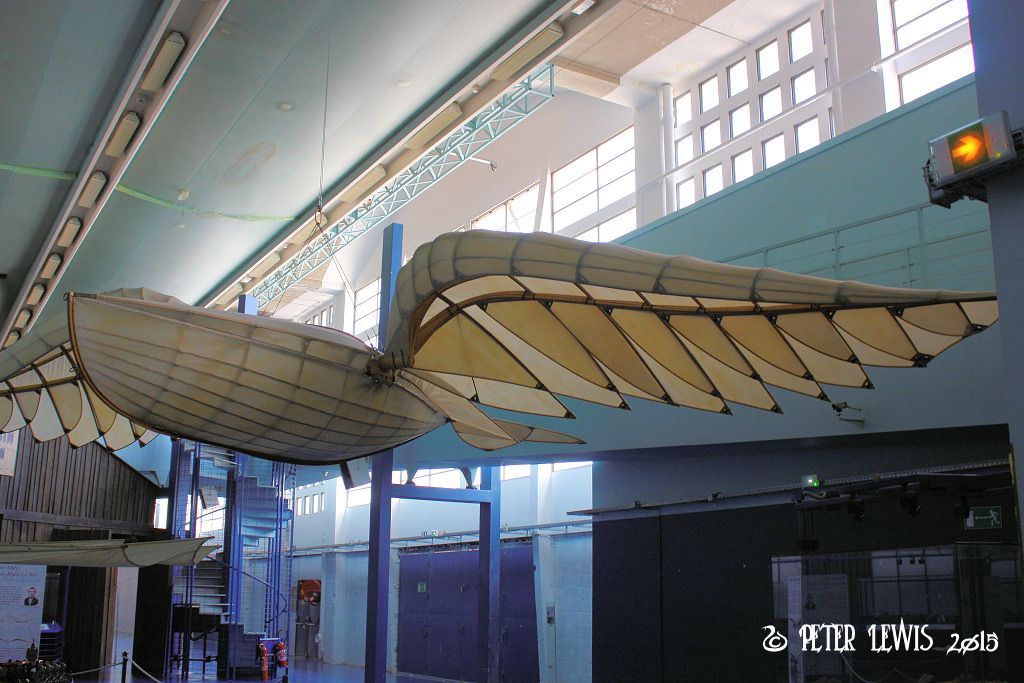 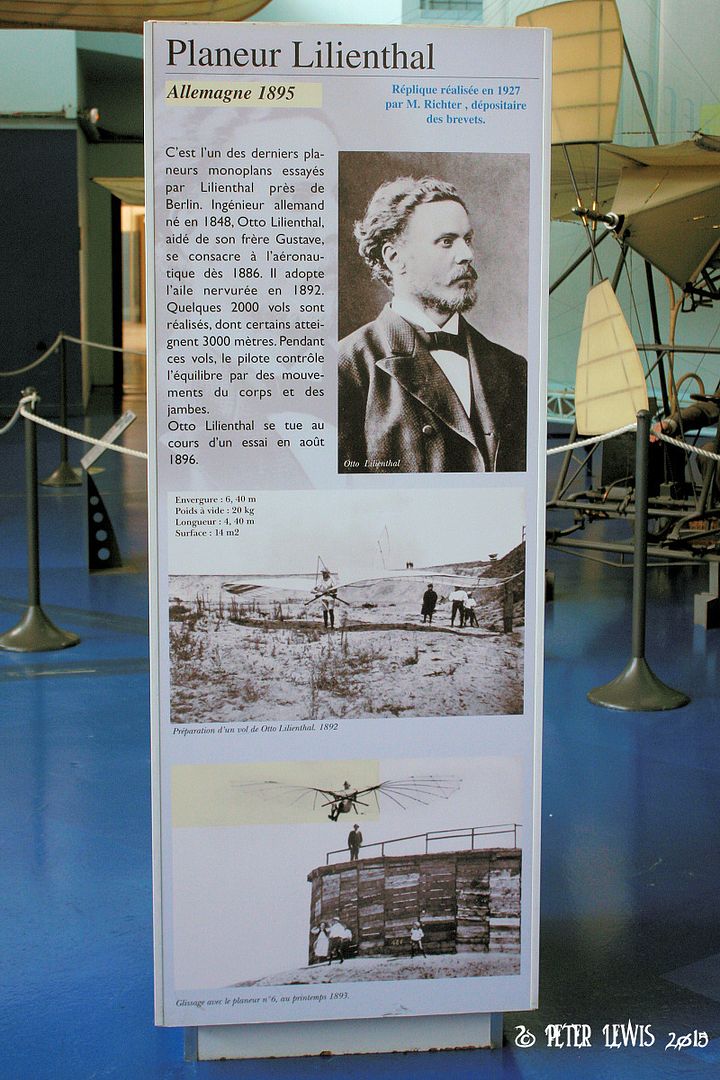 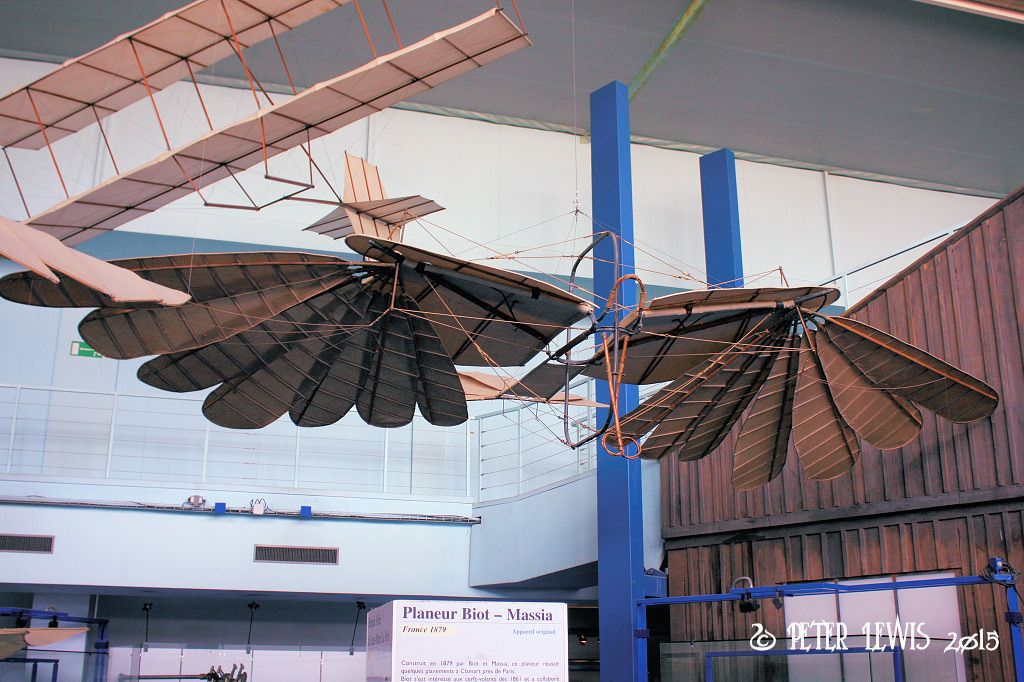 |
|
|
|
Post by Dave Homewood on Dec 26, 2015 13:12:30 GMT 12
Excellent. I like that display team on a pole set-up, it looks great!
Is that a genuine old balloon? I guess it's a replica? Great to see. You do not see any balloons in museums that often.
|
|
|
|
Post by Peter Lewis on Dec 27, 2015 9:28:39 GMT 12
The Montgolfier is quite small - say about 2 metres tall - and in active use, so yes it would be a replica model.
There is, however, a large annex devoted to ballooning history full of original stuff - components, medals, equipment and suchlike. All original. France was, of course, the home of hot-air ballooning for many many years.
|
|
|
|
Post by Peter Lewis on Dec 27, 2015 16:20:07 GMT 12
We next move on to the pre-1914 pioneers. Bear in mind that this museum was founded in 1919, and as far as I can tell all the display aircraft are originals. In this group, that means in excess of 100 years old! A 1906 Antoinette. The engine is 8cyl in a V-configuration. 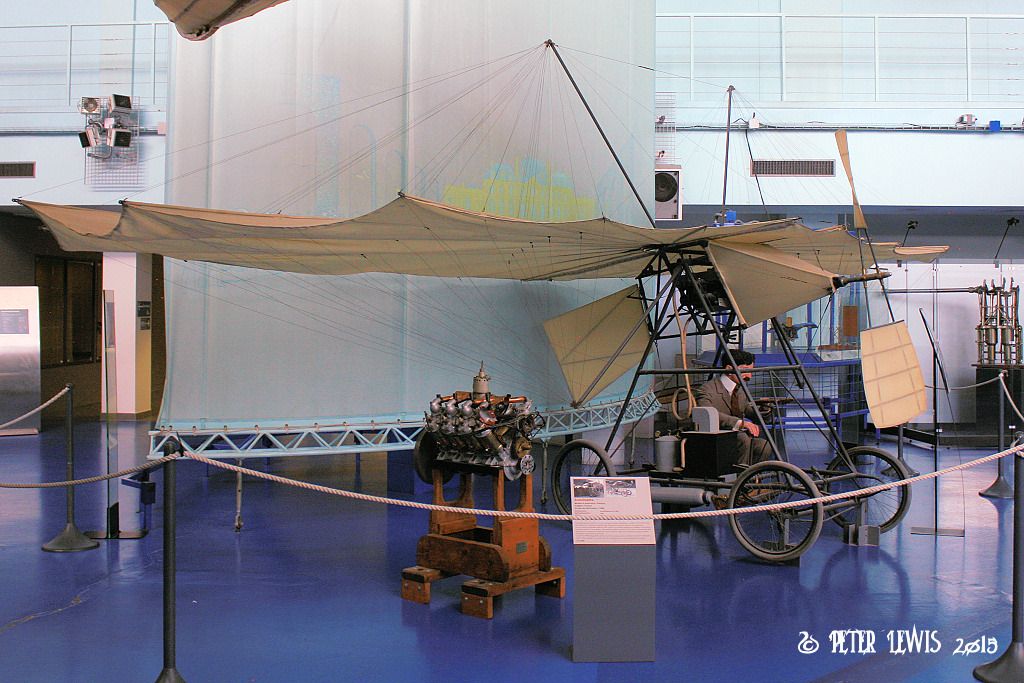 I think this one is also an Antoinette of a later year. Looks like the replica they made for the film "Those Magnificent Men . . ." 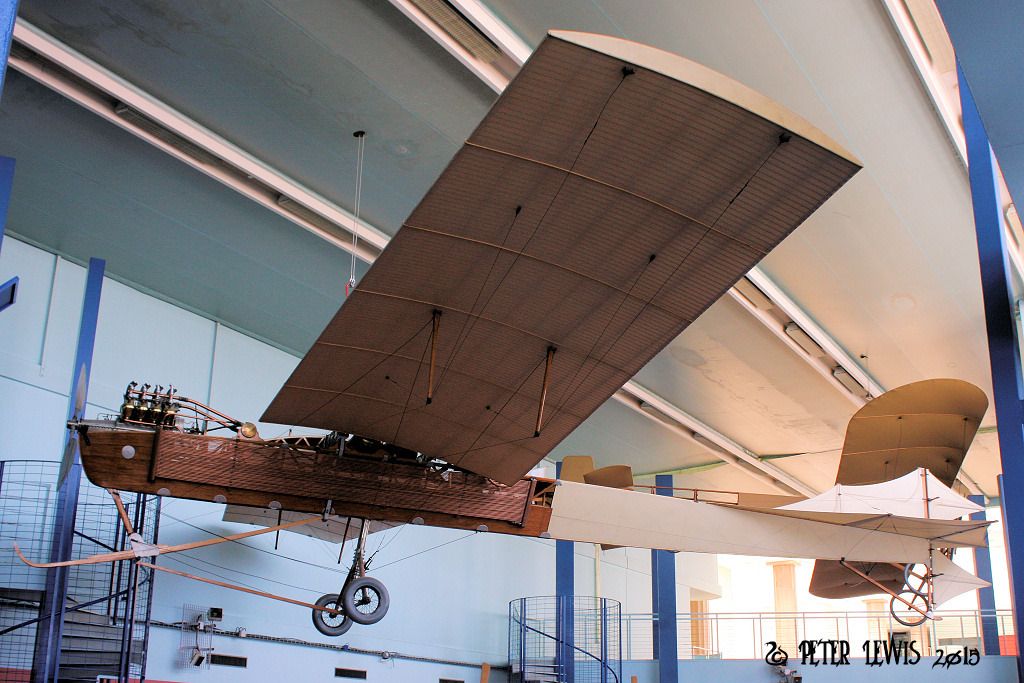 (As you would expect, all the signage is in French, rather that English or Latin which I would be able to understand, so I may get some of the details a bit confused here). |
|
|
|
Post by Peter Lewis on Dec 28, 2015 16:13:04 GMT 12
A French-built Astra-Wright Model B, capable of a speedy 60km/hr! An original aircraft, acquired by the museum in 1921. 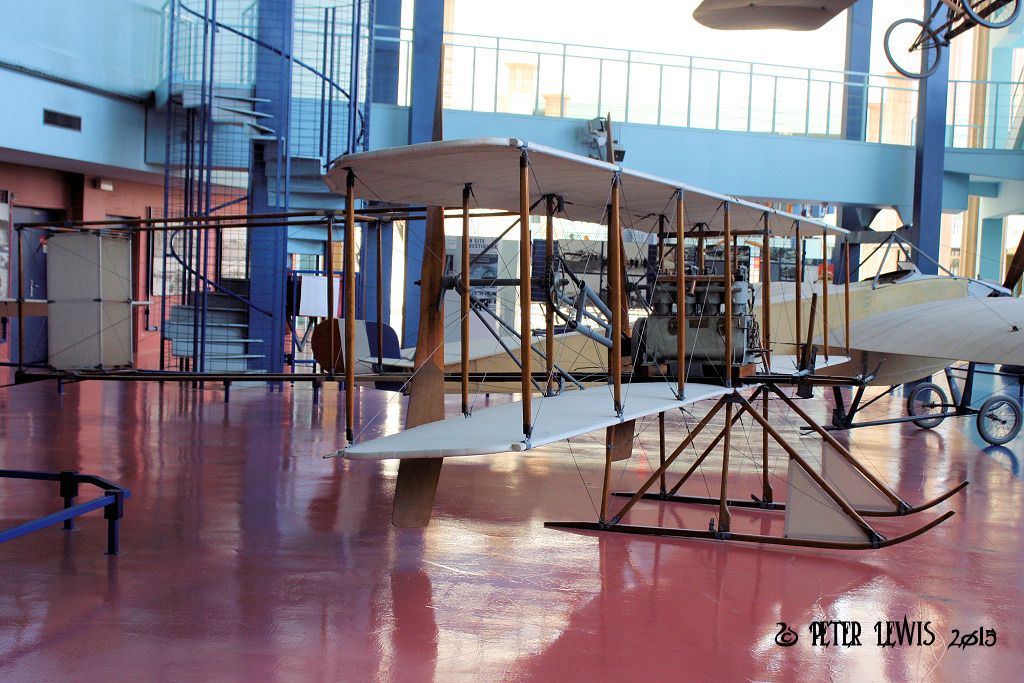 Nieuport 2N dating from 1910. The placard mentions setting a record of 80km at 109km/hr in March 1911, but I am unclear if this is the actual aircraft that performed this feat. The machine was apparently rebuilt by Nieuport in 1919. 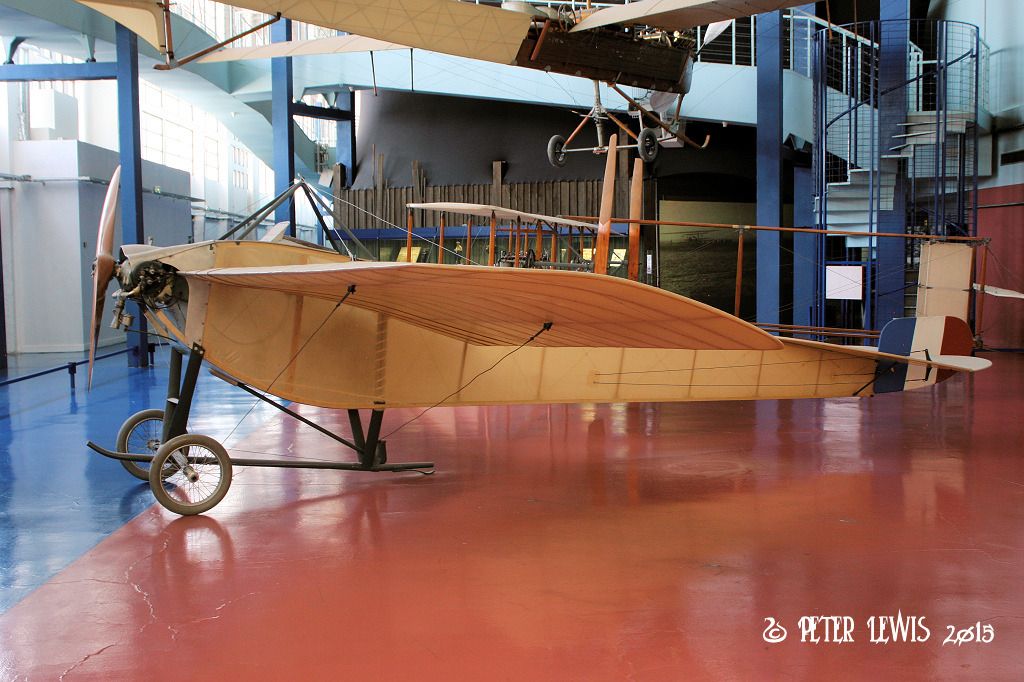 |
|
|
|
Post by Peter Lewis on Dec 29, 2015 16:59:00 GMT 12
Morane-Saulnier Type G of 1912. The Type G is a two-seater with a 10.18m wingspan.  Sister ship, the M-S Type H. Single-seater of 9.18m wingspan. It was in a Type H that Roland Gaross crossed the Mediterranean on 23Sep1913. The aircraft below was Robert and Leon Morane's personal aeroplane, given to the museum in 1924. 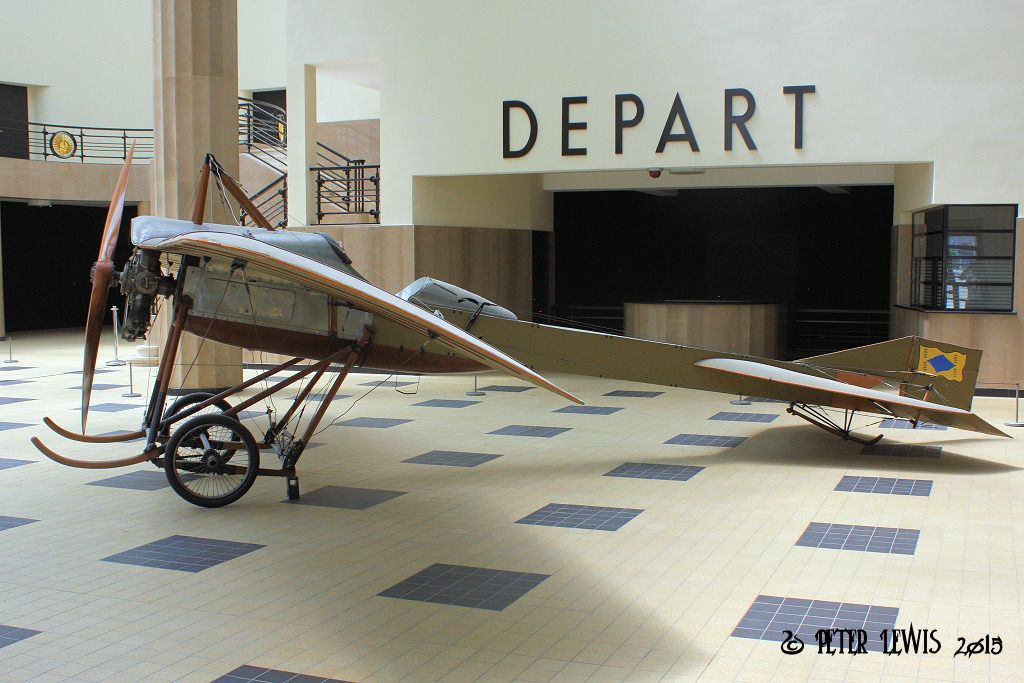 As you can see from the wall signeage, this area was the main terminal foyer in the days when Le Bourget was an active airline airfield. A nice touch to preserve this part of aviation history. |
|
|
|
Post by Peter Lewis on Dec 30, 2015 17:20:56 GMT 12
Alberto Santos-Dumont was born in Brazil to parents of French and Brazilian descent. He spent most of his adult life in France, and after some hot-air ballooning activity became interested in heavier-than-air aircraft in 1904. He flew an aircraft of his own design in October 1906. His most successful aircraft were the Demoiselle monoplanes. In 1908 Santos-Dumont started working with Adolphe Clément's Clement-Bayard company to mass-produce the Demoiselle Type 19. They planned a production run of 100 units, built 50 but sold only 15 - for 7,500 francs for each airframe. It was the world's first series production aircraft. The Demoiselle could be constructed in only 15 days. It was promoted as the first aircraft for the man-in-the-street, a concept picked up in later years by the DH Moth and the Piper Cub. American companies sold drawings and parts for Demoiselles for several years afterward. Santos-Dumont was so enthusiastic about aviation that he made the drawings of the Demoiselle available free of charge, thinking that aviation would lead to a new prosperous era for mankind. However, the aircraft had limitied capabilities - it could not fly in any sort of wind and had been designed for a pilot of Santos-Dumont's light weight, 49kg! The museum's aircraft is an original Demoiselle Type 20 and features a tail unit that functioned both as elevator and rudder, and wing warping controls. 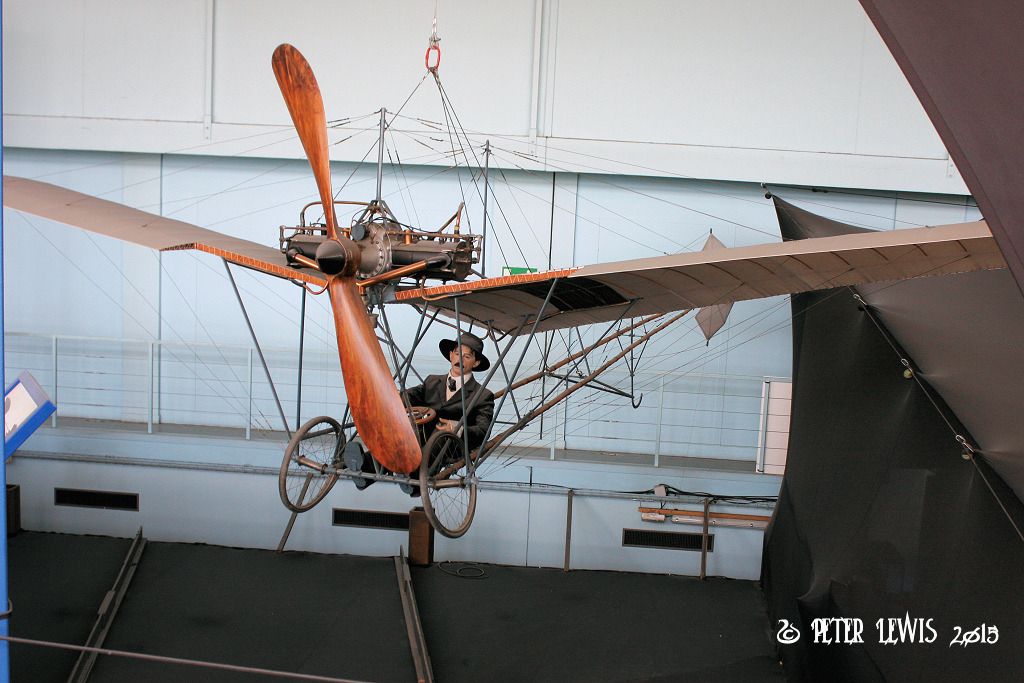 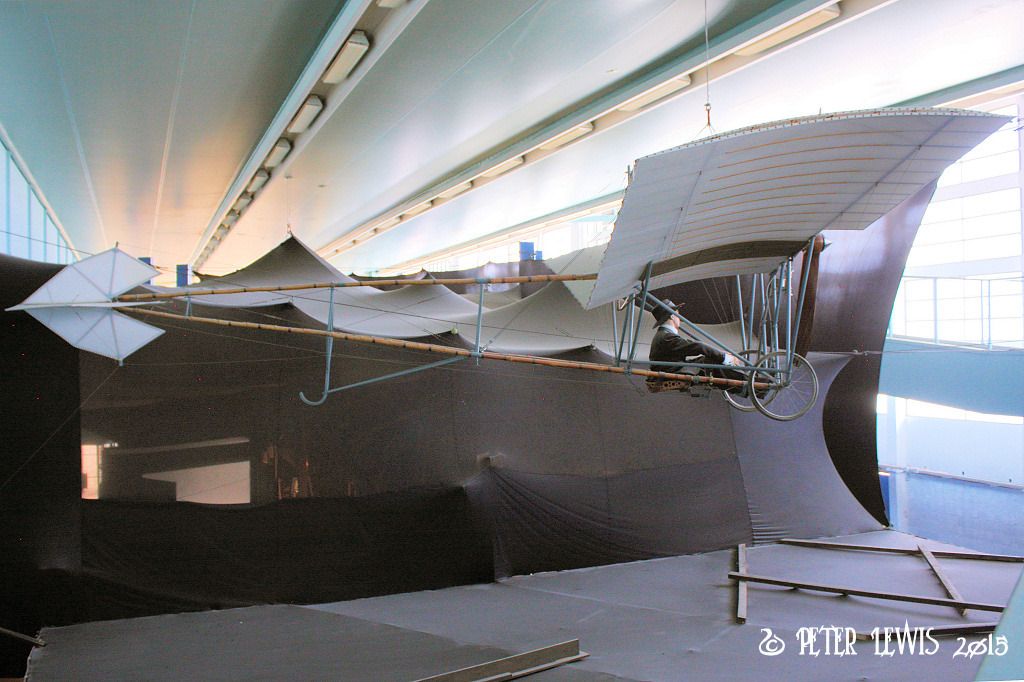 |
|
|
|
Post by Peter Lewis on Dec 31, 2015 15:49:17 GMT 12
From back in the dreamtime, 1879 to be precise, comes this Biot-Massia. This gliding machine is said to be the oldest surviving human-carrying aerial machine in existence. Several flights (probably short hops) were made by Biot. 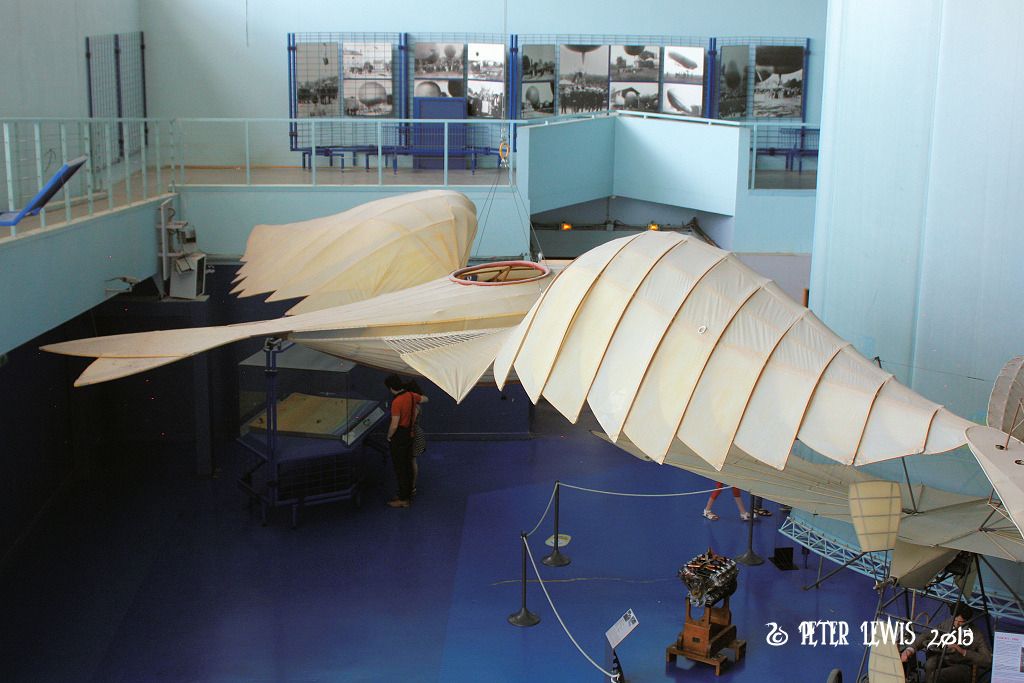 Rather more practical was the Bleriot XI. This type achieved fame by being the first aircraft to fly across the English Channel, in July 1909. That particular aircraft is at the Musée des Arts et Métiers, also in Paris. The aircraft on display here is a two-seater version, similar to Brittania, NZ's first military aircraft. 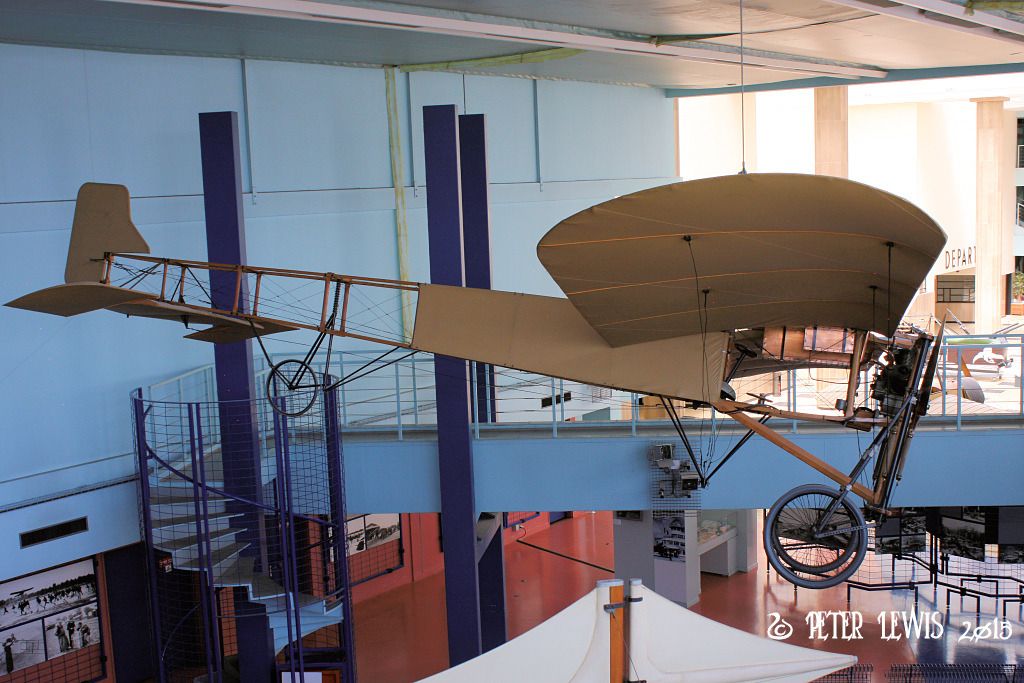 |
|
|
|
Post by Peter Lewis on Jan 1, 2016 17:16:04 GMT 12
We now move on to the Great War ( WW1 ) section. This is a vast hall with aircraft displayed in two levels. It must have been real fun, in 1919, deciding which, of the many thousands of aircraft held in store at that time, to include. There are some real rarities here, quite a few of which i could not identify. We'll start with the Junkers D.I - a fighter aircraft produced in Germany late in the war, significant for becoming the first all-metal fighter to enter service. Intended for naval use, they ended up in battle on the eastern front. Just 41 were produced and this is the only surviving example. 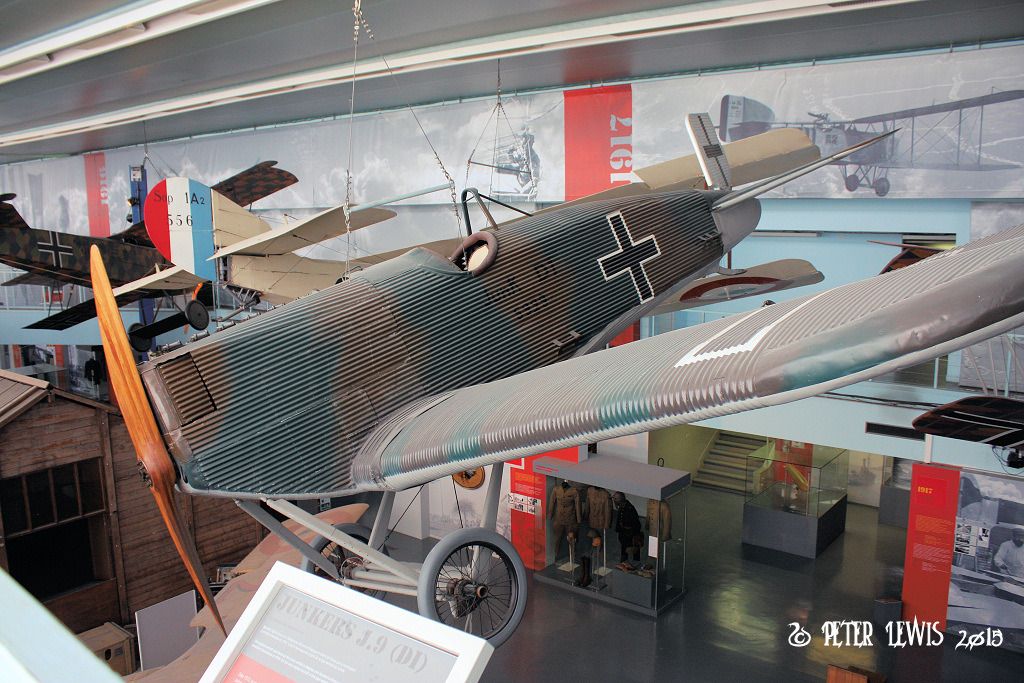 Better known was the Airco DH9, with over 4000 being built. Nine of these came to NZ in 1919 as part of the Imperial Gift consignment. This one seems to be fitted with the generally unreliable BHP engine.  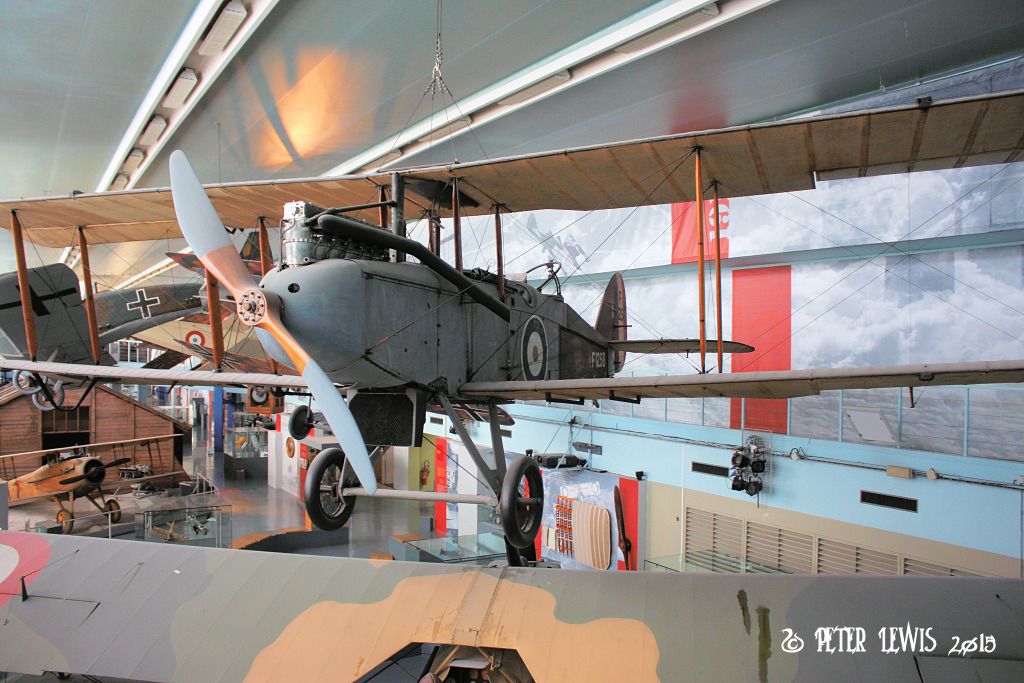 |
|
|
|
Post by baz62 on Jan 1, 2016 17:30:54 GMT 12
We'll start with the Junkers D.I - a fighter aircraft produced in Germany late in the war  Where did the guns go I wonder? |
|
|
|
Post by Dave Homewood on Jan 1, 2016 18:19:53 GMT 12
I wonder how this collection fared in WWII, it's a wonder the Nazis did not plunder that Junkers, for example.
|
|
|
|
Post by isc on Jan 1, 2016 20:22:05 GMT 12
I found where the guns on the Junkers D1 go, there were 2 Spandau machine guns on top of the engine. It got the nickname of the "Tin Donkey". isc
|
|
|
|
Post by Peter Lewis on Jan 2, 2016 18:00:02 GMT 12
The Voison 10 Ca2 4 was a French pusher aircraft designed for bombing operations. Unsually for a WW1 aircraft, it had a nose-wheel undercarriage. It was used extensivly from 1917 in night bombing operations. The 10 Bn2 was a version armed with a 37mm Hotchkiss quick-firer canon. The nacelle on display is the last remnant of the 900 or so built, and belonged to Escadrille V110., Surprisingly, it was bomber modified to the canon version. 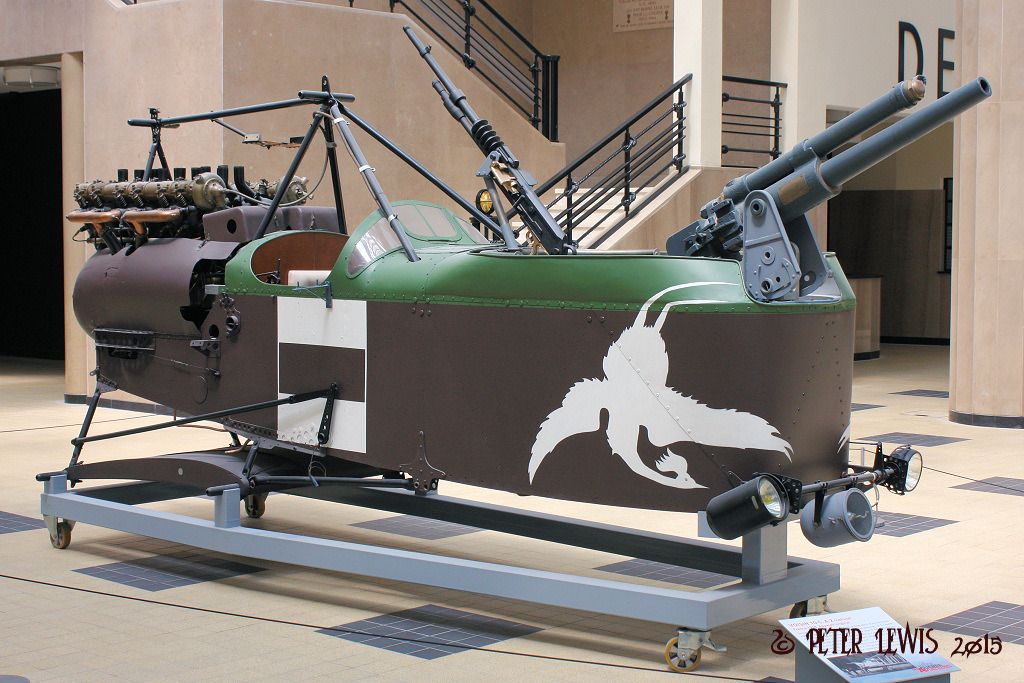 The Sopwith 1A.2 was more commonly known as the 1 1/2 Strutter. Although of British design, 4500 of them were built in France and equipped 72 Escadrilles from 1916 until the end of the war.. The 1A.2 version was a two-seater observation aircraft. 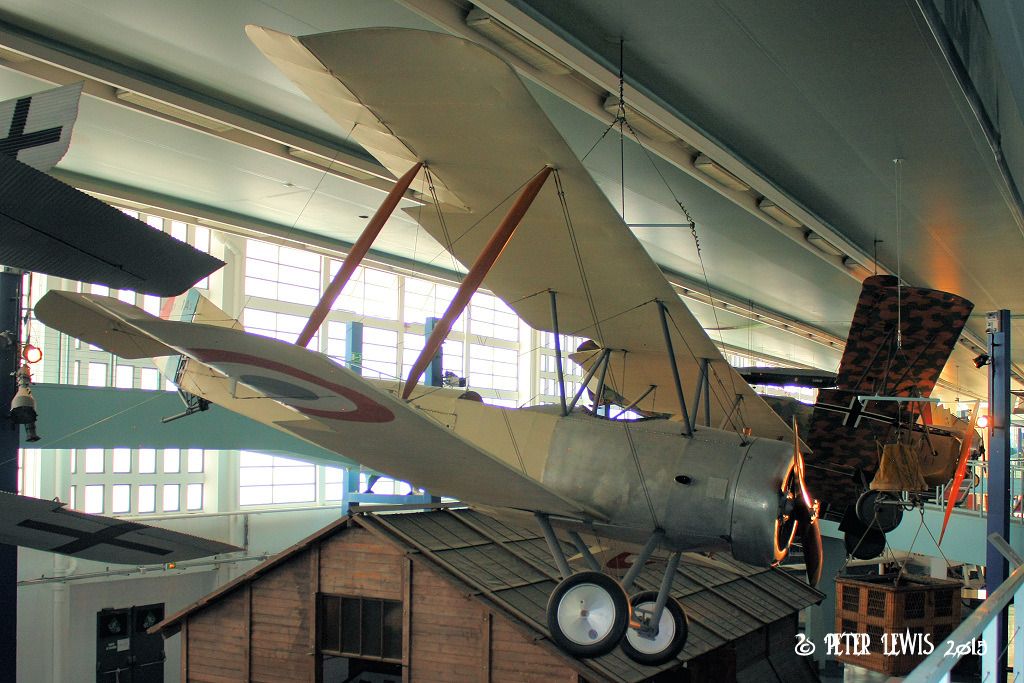 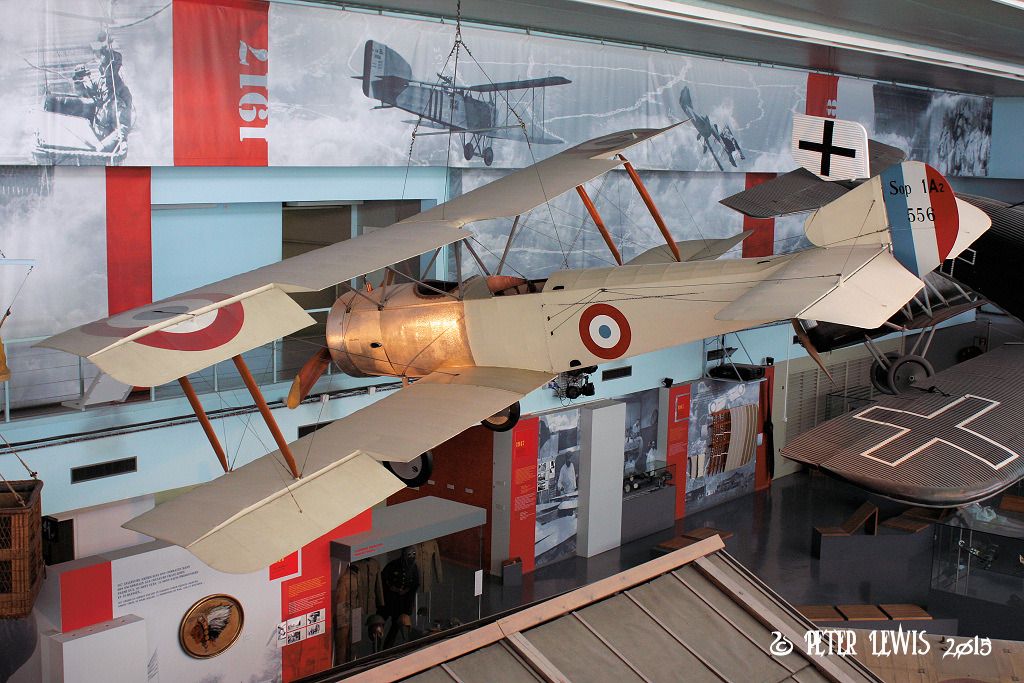 |
|
|
|
Post by Dave Homewood on Jan 2, 2016 18:47:33 GMT 12
I'd love to see one of those Voison 10's flying and firing its cannon! Wow!!
|
|
|
|
Post by isc on Jan 2, 2016 20:22:12 GMT 12
Apparently the cannon armed Voisins' were sent ahead of the bomber Voisins' on night bombing raids, to look after the search lights and AA guns.
The aircraft had a four wheeled undercarriage. isc
|
|
|
|
Post by Peter Lewis on Jan 3, 2016 16:22:57 GMT 12
The Maurice Farman MF.7 Longhorn was a prewar design, dating from 1913. Because it was available, it was used for reconnaissance by both the French and British air services in the early stages of the war before being relegated to service as a trainer. Many RFC pilots had their intial flying training on the type, prior to the introduction of the 504K and DH6.  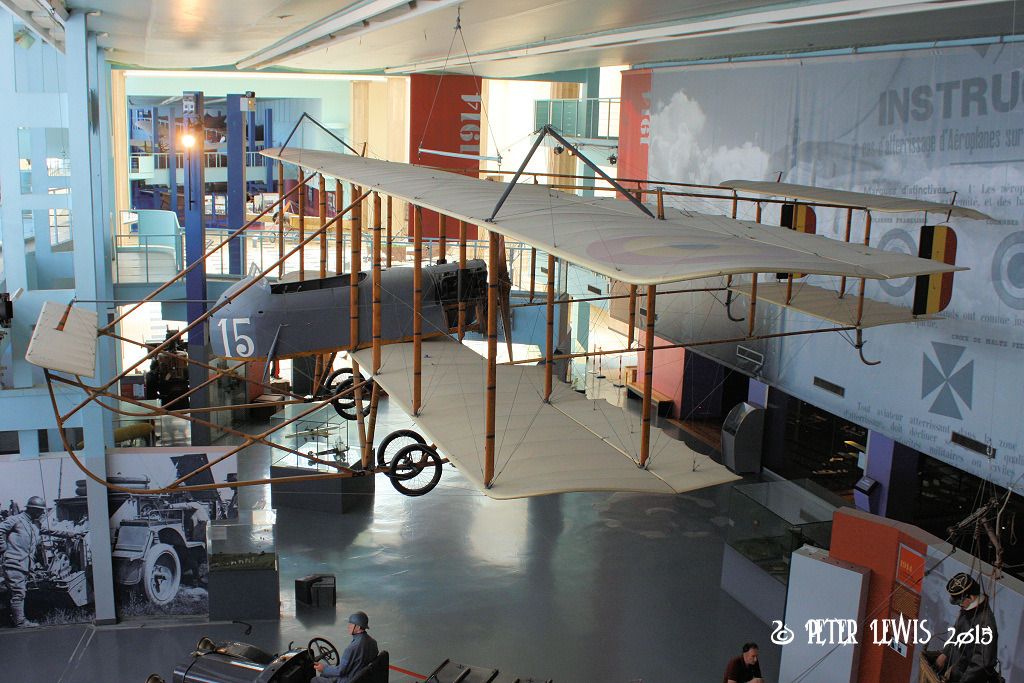 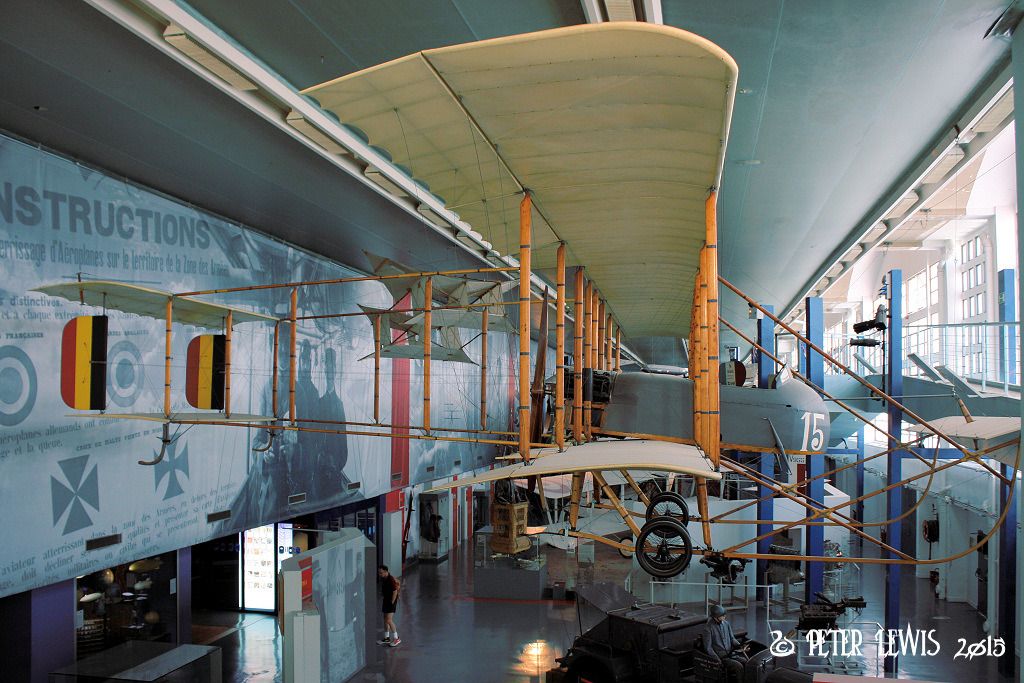 At the other end of the performance spectrum is the Fokker D.VII Designed by Reinhold Platz of the Fokker-Flugzeugwerke. Germany produced around 3,300 D.VII aircraft in the second half of 1918. In service with the Luftstreitkräfte, the D.VII quickly proved itself to be a formidable aircraft. The Armistice ending the war specifically required Germany to surrender all D.VIIs to the Allies. Surviving aircraft saw continued widespread service with many other countries in the years after World War I. 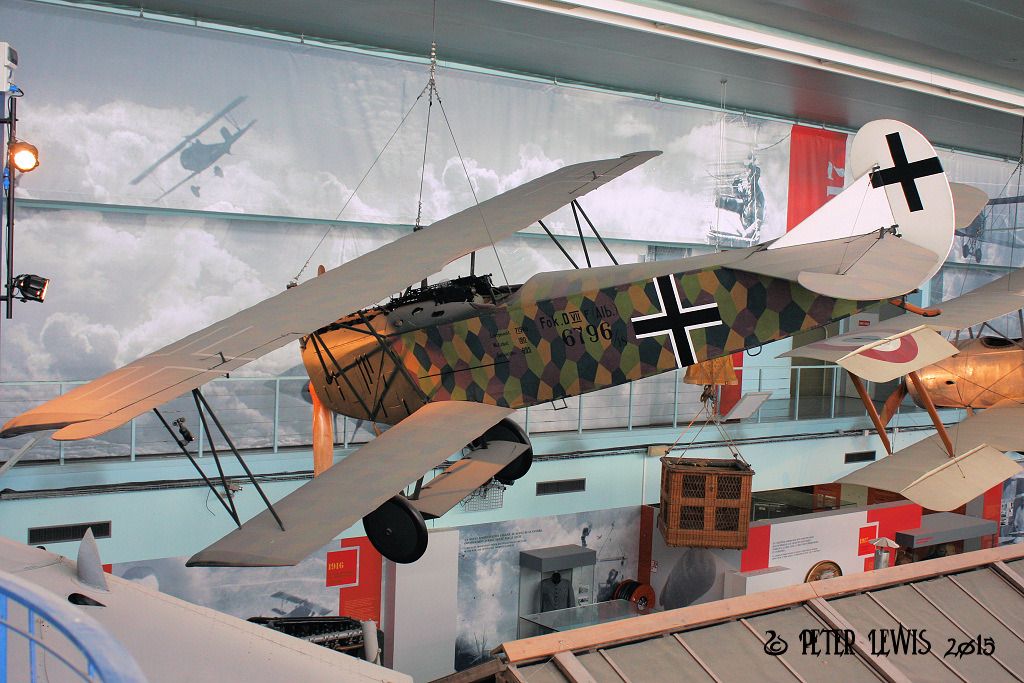  |
|
|
|
Post by Peter Lewis on Jan 4, 2016 17:04:28 GMT 12
The Nieuport 11 (aka as Nieuport XI) was famous as one of the aircraft that ended the 'Fokker Scourge' in 1916. This type reached the French front in January 1916, and 90 were in service within the month. This small, lightly loaded sesquiplane outclassed the Fokker Eindecker in every respect. The type saw service with several of France's allies, and gave rise to the series of "vee-strut" Nieuport fighters that remained in service (latterly as trainers) for the rest of the war. The aircraft displayed here is the sole original surviving Nieuport 11, currently marked as N556 with the personal markings of Commandant Charles Tricornot de Rose, holder of the first military pilot licence. It had previously been marked as N976. The TVAL at Masterton have a replica ZK-NIM flown in Italian colours as N2123, and another replica flies at Omaka as NII (ZK-NII)  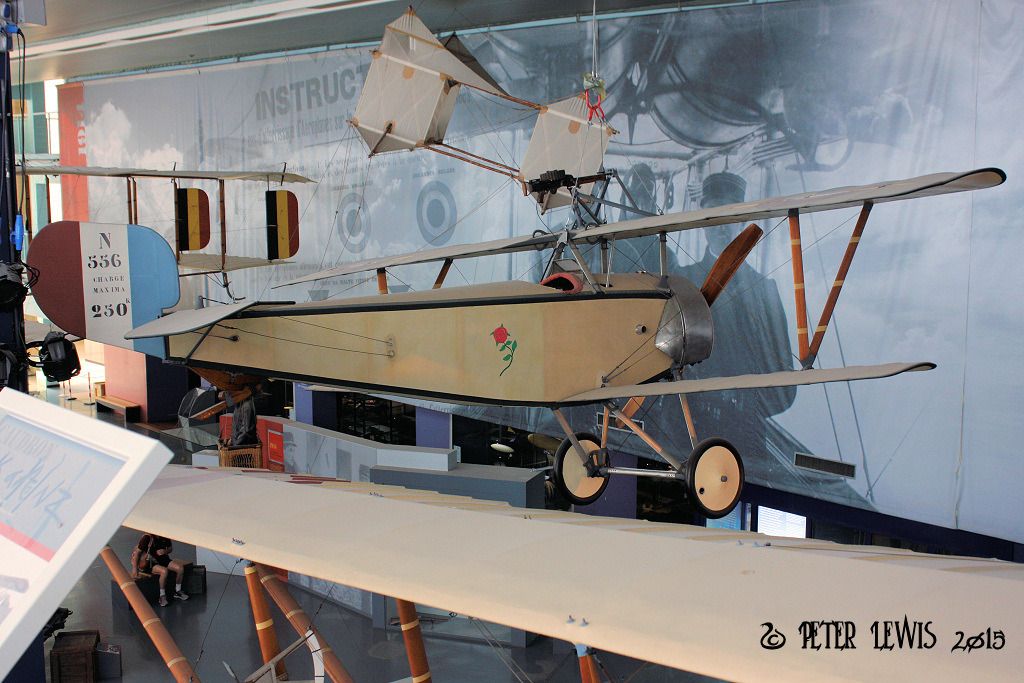 Possibly the star of the WW1 section of the museum is this SPAD VII The SPAD VII was renowned as a sturdy and rugged aircraft with good climbing and diving characteristics. It was also a stable gun platform, although pilots used to the more manoeuvrable Nieuport fighters found it heavy on the controls. It was flown by a number of the famous aces, such as France's Georges Guynemer, Italy's Francesco Baracca and Australia's Alexander Pentland. No.254 was assigned to Lieutenant Georges Guynemer in mid-December 1916. Upon his request, it was fitted with a 180ph engine. Guynemer scored 19 victories (18 confirmed) while flying this aircraft. Guynemer's SPAD No. 254 is one of the very few and rare exhibited complete aircraft in the world to have actually flown as the mount of a World War One Ace. 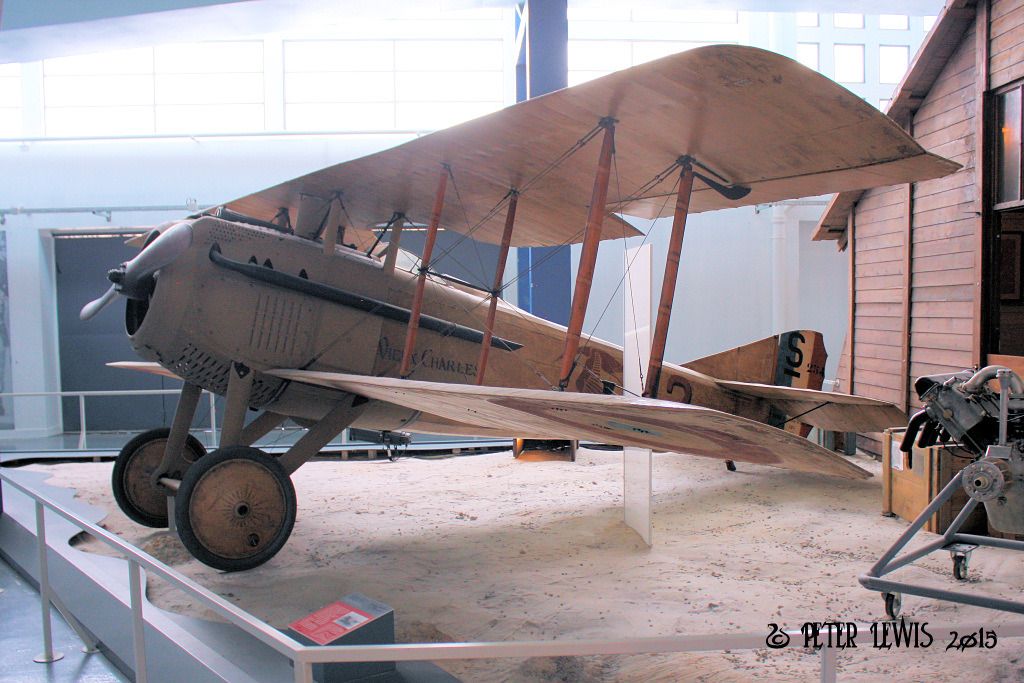 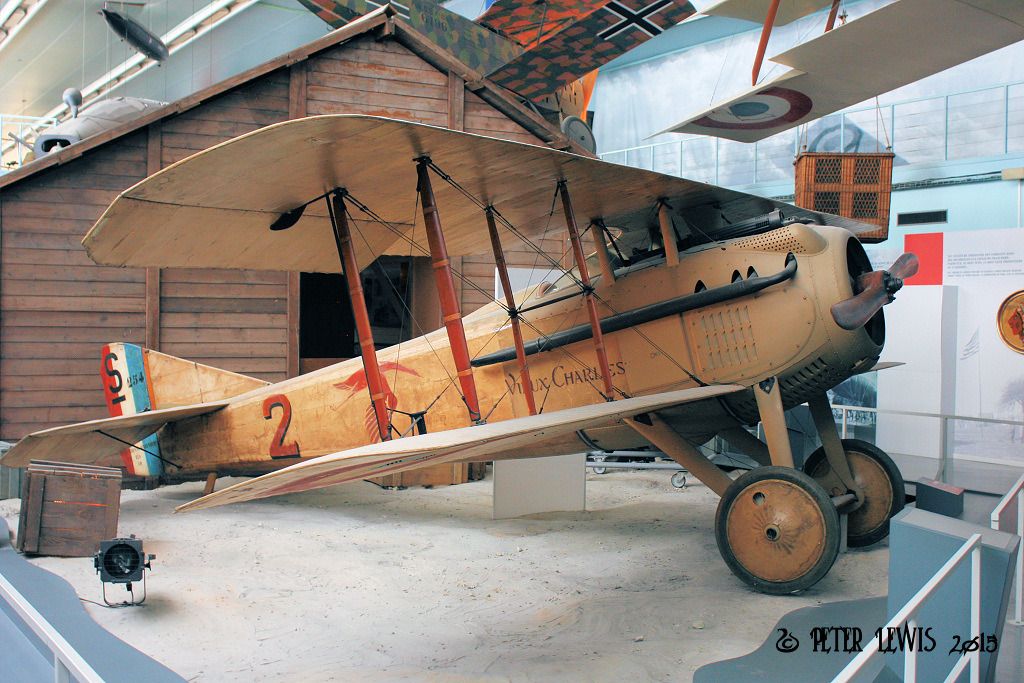 |
|
|
|
Post by Dave Homewood on Jan 5, 2016 7:39:03 GMT 12
Wow, those last two genuine examples are amazing to see. 18 confirmed victories in the one aircraft is pretty incredible.
There cannot be too many aircraft preserved from any era that were aces' personal mounts (and had so many kills chalked up).
|
|
|
|
Post by shorty on Jan 5, 2016 9:46:18 GMT 12
The other interesting thing about Guynemer's Spad is that it has never been restored hence it's faded "washed out" appearance compared to the Museums other Spad on display. (Guynemers's was suspended when I was there)  |
|
|
|
Post by johnnyfalcon on Jan 5, 2016 16:29:19 GMT 12
An example of this type would fill a significant gap in TVAL's collection.
Very interesting and informative overview Peter, thank you.
|
|
